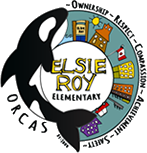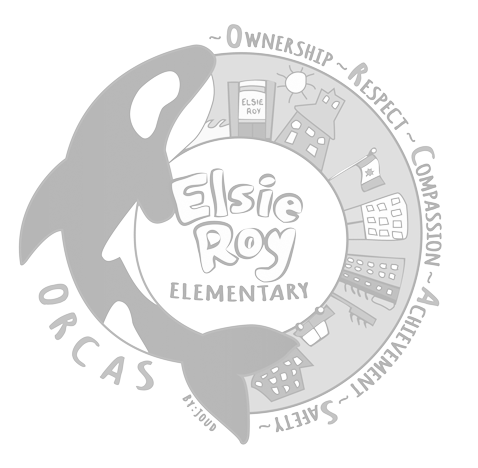Assessment and Reporting
Middle Years Programme Assessment
At Elsie Roy, we communicate student learning formally twice a year in conjunction with three additional opportunities based on authentic evidence of student learning from a variety of sources such as student work, photographs, audio, video and portfolios.) These assessment practices are in line with the IB assessment standards and practices. These formal reports, for all MYP students, will be IB specific and will focus on your child's areas of strengths and possibilities for further growth.
Students are assessed using criteria related rubrics within each subject area. These criteria break each subject down into different skills so that feedback is more specific than traditional averaging. Students will be awarded a level 0-8 on each of the 4 criteria.
Levels of achievement are not marks out of 8 but more a snapshot of where the student is in their development of a continuum of thinking and learning.
Understanding what each level means…
Level 0/1 | Work is not meeting expectations or has not been handed in. Students has an “I” for inprogress. |
Level 2 | Produces work of limited quality. Expresses misunderstandings or significant gaps in understanding. The student has difficulty applying knowledge and skills. |
Level 3/4 | Produces work of acceptable quality and communicates basic understanding of many concepts and contexts. The student is beginning to demonstrate critical and creative thinking but requires support. |
Level 5/6 | Produces high-quality, occasionally innovative work. Communicates secure understanding of concepts and contexts. Demonstrates critical and creative thinking, sometimes with sophistication. Uses knowledge in familiar real-world situations |
Level 7/8 | Produces high quality, innovative work. Communicates comprehensive understanding of concepts and contexts. Consistently demonstrates sophisticated critical and creative thinking. Can transfer knowledge to unfamiliar real-world situations. |
Tips for understanding how we communicate student learning (CSL):
· NA will be used to indicate that the criterion has not been assessed at this point
· 0 will be used to communicate with parents that the student has either not handed in the assignment or the work was not of sufficient quality. Students must make up missed work.
· The final CSL document will have OLA (Overall Level of Achievement). At the end of the year an OLA will be calculated for each student by adding their level of achievement for each criteria and converting it to an OLA 0-7.
Example:
Subject Criteria for Science
Criterion A | 6 |
Criterion B | 5 |
Criterion C | 3 |
Criterion D | 4 |
Total | 18 |
Boundaries | OLA |
1-5 | 1 |
6-9 | 2 |
10-14 | 3 |
15-18 | 4 |
19-23 | 5 |
24-27 | 6 |
28-32 | 7 |
Student would receive their level for each Criterion on the final report, as well as, their OLA level of 4
Teachers organize continuous assessment over the course of the year according to MYP assessment criteria. Teachers are responsible for structuring varied assessment tasks that will allow students to demonstrate their learning according to the objectives for each subject group. These include:
- open-ended, problem-solving activities
- tests and examinations
- investigations
- organized debates
- hands-on experimentation
- analysis and reflection
- performances
- product design and completion
Approaches to learning are a set of skills that students master throughout the program that will allow them to be life-long learners. These skills are taught in the classroom and then students have opportunities to self-reflect on their progress throughout the year.
To Learn About The General Grade Descriptors, Click Here:
IB MYP General Grade Descriptors (PDF)
To See an Overview of Subject-Specific Criteria Click Here:
IB MYP Overview of Subject Specific Criteria (PDF)
For a Detailed Guide to MYP Assessment, Click Here:
A Guide to MYP Assessment (PDF)
Summative vs Formative Assessment (PDF)
The International Baccalaureate Organization (IBO) validates the assessment practices of participating schools. Teachers will use a variety of methods to collect information about individual student achievement. Student work will be assessed against BC Performance Standards, BC curricular objectives and some international criteria established by the IBO.


